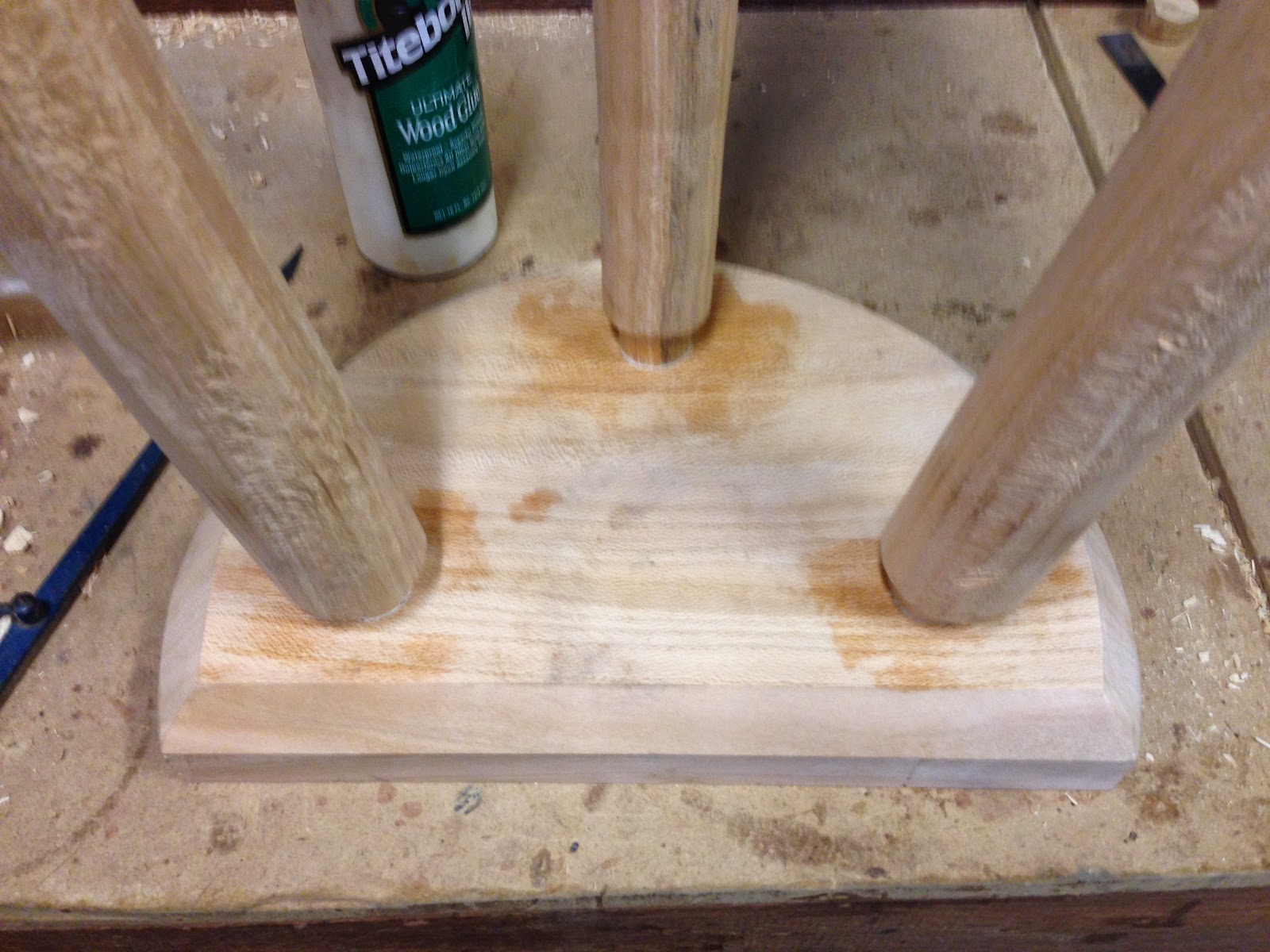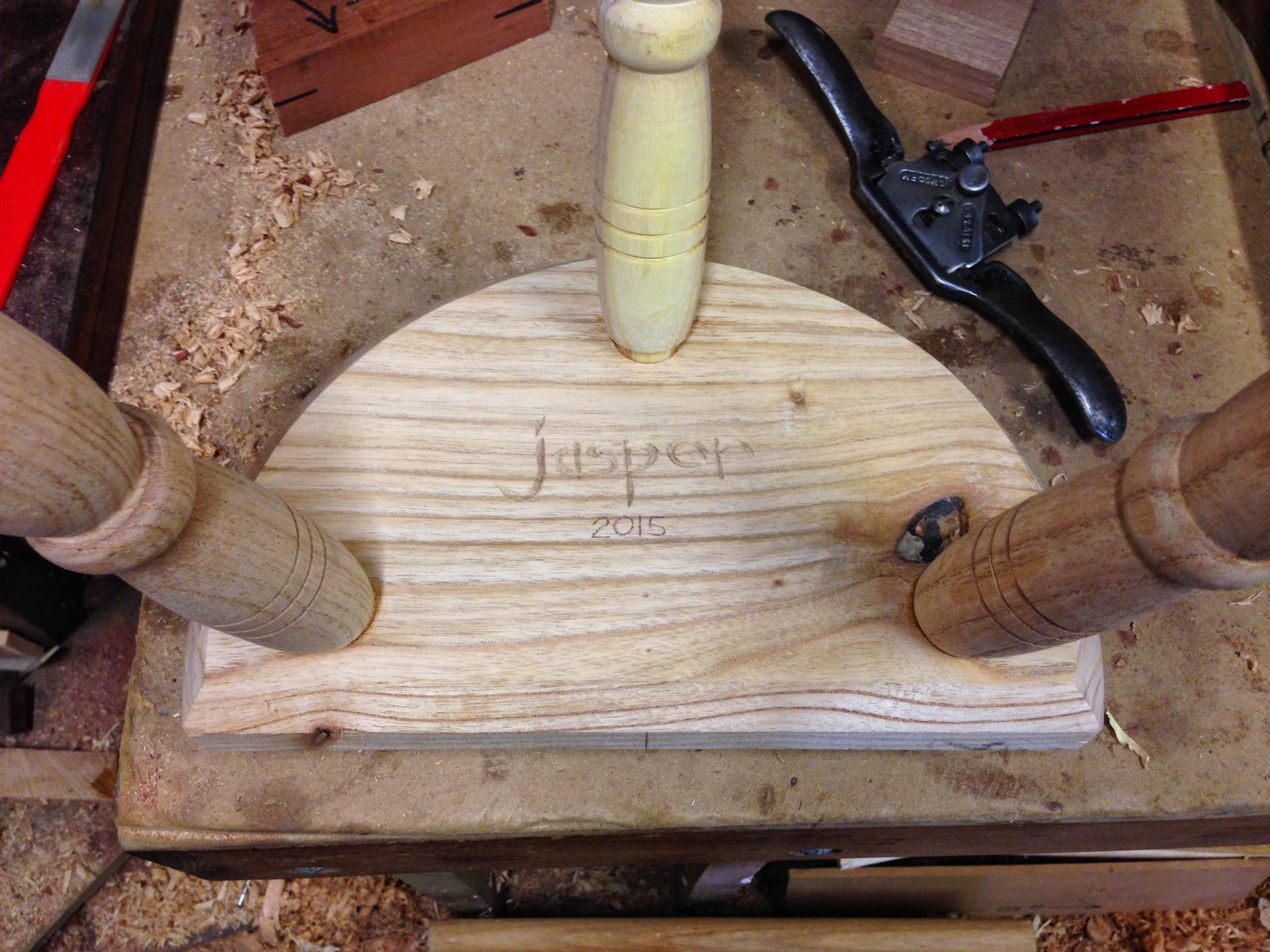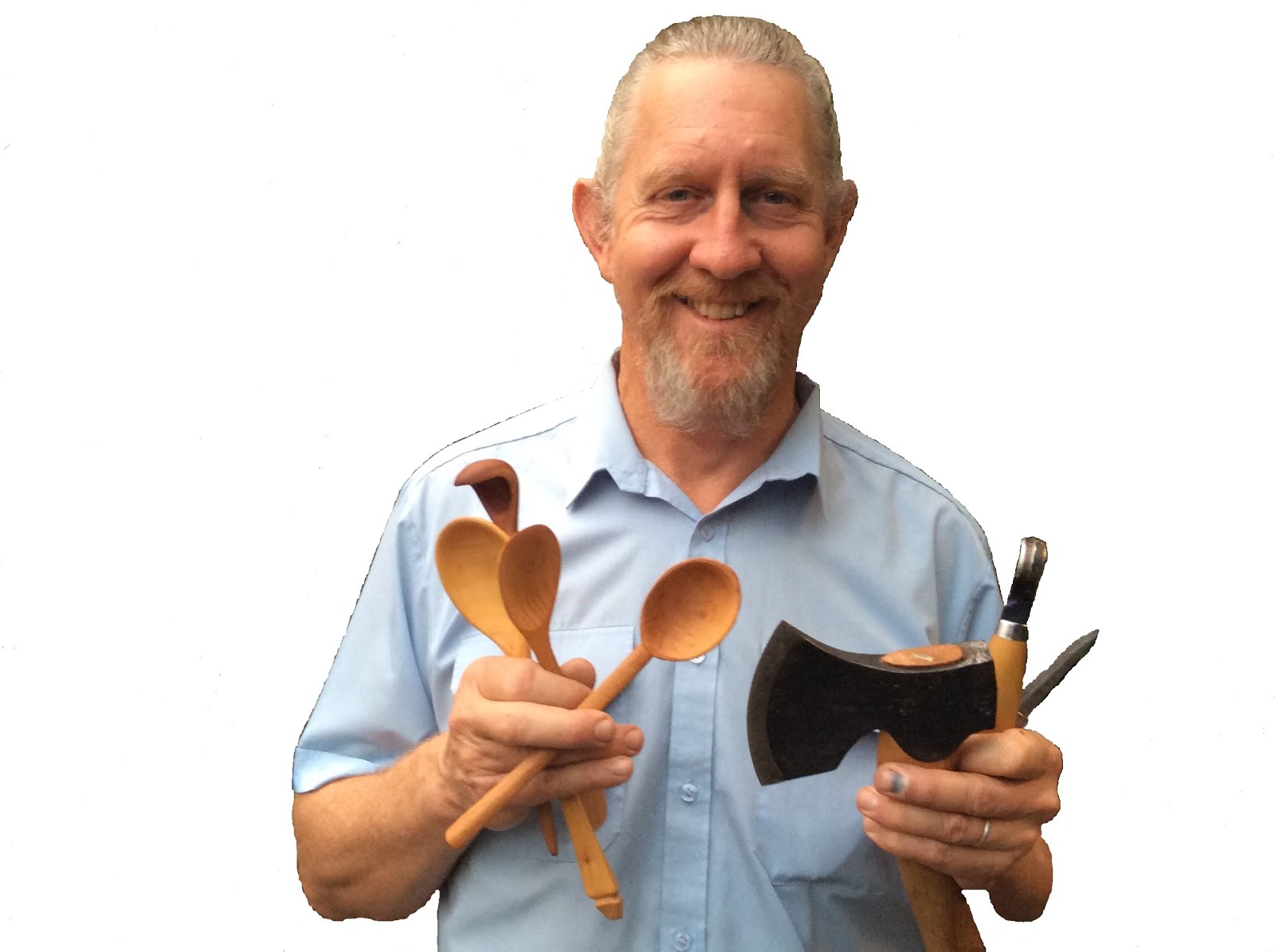One of the things I love about green woodworking is the sense of history behind it. We use ancient skills and techniques to make simple functional items from pieces of trees. Then there is the magic of making... sharing something with other craftspeople down through the ages.
I have been enjoying following Christopher Schwarz ' posts about the "Furniture of Necessity" book he is writing. In one of the
posts he referred to the
Lund Stool, an 11th Century Viking Era stool.
The remains of the stool were found near Lund, Sweden. Hence the name. All that remains is the original Beech seat with the three holes for the legs. Similar stools have also been found, I understand, from northern parts of the UK, where the Vikings had ruled off and on for many centuries.
As a person who has always liked practical functional furniture, the Lund Stool really took my fancy. I appreciate the history behind it too.
A Lund Stool Made from London Plane.
A couple of months ago, I obtained a big chunk of
London Plane tree. Fairly soon after, I shaped up a few legs for chairs and stools at my shaving horse. These and some chunks for seat tops have been sitting around through our very hot Perth summer, under observavation. So I am really pleased that the London Plane appears to be pretty stable, with minimal checking. I guess it's the interlocking grain which made the log such a challenge to break down - which is also helping to hold the material together! OK, so it was time to have serious play with the London Plane.
I put three of the legs, which I had pre-shaped on my shaving horse, into my spring pole lathe and turned a tenon on the top end of each leg.
 |
| A tenon is quickly turned on the top end of the leg, using my trusty spring pole lathe. |
The legs ready, it was time to make the top. From a nice slice of the London Plane, I drew the D-shape and cut out the shape on my bandsaw.
 |
| The D-shaped seat cut out on the bandsaw. Now to shape the edges. |
OK, so this is not all pre-industrial green woodworking. It's a meeting of ancient and modern, because it is quicker when I have so many time pressures. While I used the bandsaw to cut out the shape, I did use a drawknife and spokeshave to clean up the edge and shape the profile. In this case, a wide chamfer on the underside, visually reducing the thickness of the edge.
 |
| Love that drawknife! Cutting the chamfer between the lines. |
The top shaped, it was time to drill the holes for the legs. The first step was to determine the angle for the legs. With a Lund Stool, two of the legs originate from a line paralell to the flat front. The third leg originates from the rear of the seat.
 |
| Planning the position of the leg mortices (holes). |
 |
| In this case, a drill press was used for the holes. |
Whether drilling on a drill press, using a brace and bit, or using a powered drill, the trick is to get the holes at the right angle - and a consistent angle. There is the "rake", the "splay", and the "resultant angle" is what you get when you add the two together. Getting this right (and consistent) takes some planning and jigs can help enable consistency.
 |
| A nice snug fit plus some glue. Nice. That's moisture from cleaning off surplus glue. |
To enable the legs to keep tightly housed in the seat, I made sure the legs were drier than the seat top. This way the top shrinks as it dries, locking up the joints further.
 |
| View of the nice chamfer underneath. |
Unlike the original Lund stool, this variation would not have the legs passing right through the top - so the holes did not go all the way through the top. Once the legs were glued and driven into place, the stool was stood on a flat surface, the seat levelled with packers under the legs, the base of the legs drawn, and then cut with a tenon saw.
 |
| Marking off the legs before cutting them to level. |
With the legs now cut and levelled, an nice chamfer was cut around the base of each leg to protect the edges of the feet from chipping or tearing. the construction done, a couple of coats of Linseed Oil were applied. Job done.
 |
| Not a bad lookin' stool... |
 |
See that black mark? Stain from nails embedded deep in the tree!
Killed my chainsaw. A nice reminder. |
What a nice stool. I really like my Lund Stool, so I reckon I'll make some more.
A Lund Stool for Jasper, made from Cape Lilac.
My 4 year old grandson Jasper really liked the taller Lund stool made from London Plane. So I said I would make him one - only it will be a little lower in height. This time I would do in the traidtional style, with the legs coming up through the top. I would also use Cape Lilac for this stool.
I had a set of three legs I'd previously whipped up in my spring pole lathe, so I finish-turned the tenons on the tops of the legs, and made up the top.
 |
| Wedged ends of the protruding legs. Glue drying. |
The wedging is a great process. A kerf is cut in the tenon, to take the wedge. Wedges are prepared, and the legs inserted from below with a nice snug fit. Glue is wiped on both surfaces of the joint. Being careful to get the grain orientation right, glue is wiped on the faces of the wedges and the are driven into the ends of the tenons. You can often feel it when the wedges are driven far enough, but usually you will hear the sound change when you are hammering. Stop there. When the glue is dry, the protruding legs tops are cut off and planed flush with a block plane. After levelling the feet,
I carved Jasper's name on the underside of the seat.
 |
| Name carved, it was time to clean up and polish the stool. |
The stools was finished just with a liberal application of Orange Oil, and the surplus wiped off after about half and hour. It's a very nice and simple finish, which suits such a simple stool.
 |
| Slightly more angled legs, to make it more stable for the little fella. |
I really do like working with Cape Lilac making this kind of stuff!
 |
| Nice stool, nice wood. A pleasure to make. |
What a lovely way to utilise trees removed from suburban backyards. Instead of just going into the chipper or into landfill, these small portions of trees have become functional everyday furniture items and family heirlooms. Given that about 50% of wood is carbon, that's a small amount of carbon sequestered in these small pieces of furniture. Every little bit helps!
 |
| I seem to be making stools for all of my grandkids. Two down, five to go! |
 |
| Jasper checks out the seat. |
I really like the Lund Stool style - but what is it about this D shape top? Why that shape? I reckon I might have a clue to this style of seat top. It may have come about because it is easier to obtain the piece from a tree - especially if you want the wood's grain "on the quarter". A smaller tree is required than for a full circle stool or chair seat. Less effort, less energy, more trees to choose from. I might be wrong, but having made a couple and a few more extra seats for future stools, so I reckon the Vikings were pretty smart. I take my hat off to them. Love these Lund stools!
 |
| Jasper likes the Lund stool too. |
If you live in Perth, Western Australia, and want to share in the pleasure of making a Lund Stool, I am running a 2 day workshop on the weekend of the 9th and 10th May 2015. Check out the "Upcoming Workshops" link to learn more.
.jpg)



